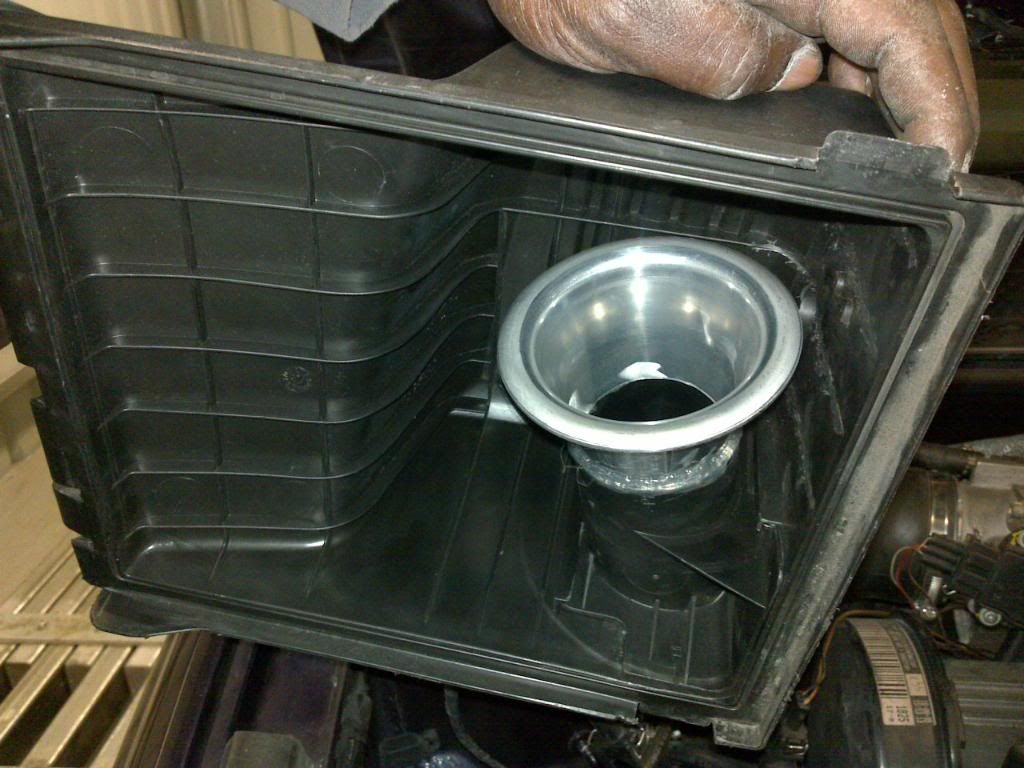So you have bought a MK3 16v in stdish form and you are eager to experience "the fury". Before going out on that loud pedal you start to read the threads on ClubGTi. Then the question comes...What filter is the best?
Well yours truly decided to find out and to do that, it was essential to team up with the good guys at
Streamline Garage, in London, to use their newly installed 2400BHP AWD Dyno Dynamics rollers

to validate the typical air induction combination you would find on a MK3 today.
These methods can be applied to most airboxes found on other engine types.
First of all I would like to thank
eatonMK2, VWsingh and cs98sss4 for the use of the specimen/victims in this study and of course
Theo@Streamline for letting me loose on his dyno to perform the 25 tests back to back
Now let the testing begin!

The vehicle used in in this test is a 95 plate MK3 16v called N7NDO. It has a STD ABF engine with 113K miles. The only small mods are, ported throttle and matched inlet system.

The filter configurations that where tested were;
Open throttle-body ( thanks to the factory speed density digi 3.x system)
Std VW airbox w/OE filter
Std VW airbox w/K&N panel
Piper pod filter
Modified VW airbox top half, STD bottom half
Modified VW airbox complete.




Each configuration was tested at least 2 times.
The ambient air temp was 19 deg C.
25 tests were run.
After safely strapping down the vehicle on the rolls, the air ducting and and filter box were removed and the first power run was conducted.

The throttle duct and the STD top half of the air box were installed and placed in line of the dyno fan.

With the STD top half already in place, the standard panel filter was then compared to a K&N filter in the STD bottom half. A genuine VAG filter was used.
This was later removed and a Piper cross pod filter was installed and then tested.

Lastly a modified airbox, which had the OE tapered velocity stack modified and in its place a larger diameter and more bell mouthed unit, was tested with the standard bottom half and then a modified bottom half.

Not one to focus on just peak power points we shall study what happened to the torque as ultimately this would affect peak bhp points if one follows the mathematical formula BHP=TQ*RPM/5252. I will state the peak power developed in concluding.
Looking at the plots for 4 conditions,
Open throttle - FlyBHP/TQ, AFR 1
STD airbox - FlyBHP/TQ, AFR 6
Pipercross Pod - FlyBHP/TQ, AFR 12
Complete modified airbox - FlyBHP/TQ, AFR 25

We can see that;
The torque deltas between tests is clearly evident post 4500rpm
The engine's PCM fuel calibration remains into closed loop control up to 4000rpm
Latter part of engine speed range the fuel mixture seems to be between open loop lambda and component protection lambda, this difference in AFR is correlated to torque development in tests
- There are torque improvements when running the pod filter over the std airbox, but this may not be real world as the pod filter was inline of the dyno fan. In real service the engine bay heat would be conducted by the alloy silver surface of the filter, heat up the air-charge thus reducing torque. This combination also resulted in torque hanging on for longer in the engine speed range. The shorter induction length may have contributed to this effect.
- The engine performed poorly when the throttle was open with any ducting. This may have been influenced by the hot air generated by the exhaust manifold just under the throttle.
- There was no improvement when the VAG panel filter was swapped with the K&N unit, but airflow through the OE item would deteriorate after 10000miles. There was no improvement without a filter in the box.
- The torque generation of the Pod filter was matched when the modified top half was attached to the STD bottom half
The best torque spread occurred when the complete modified airbox was installed
Test 1, open throttle body, resulted in the in the worse torque curve and had peak bhp measurement of
142bhp@6200rpmTest 6, STD airbox, had improved torque range and resulted in
145bhp@6100rpmTest 12, Pipercross Pod filter, improved the torque range further and resulted in a peak of
148.5bhp@6500rpm My choice, Test 25, Modified air box and OE filter, improved torque even further than any of the other combinations and resulted in a peak power measurement of
151.2BHP@6200rpm
I have always been a believer of this type of modification and this is evident of what you will find on The WOLF R, the 3A 8v MK2 on MS and my 98 VR6. Goes to show that you do not have to spend loads of money on a shiny new induction kit if you apply some thought and modify the existing factory unit. The above modification only about 10 pounds was spent, vs 60-70 pounds on an induction kit. It makes a similar but refined sound as an open pod filter.
Hope this 10 pound modification inspires some to think next time you are about to shell out that hard earned.
Next steps,
- With the best air induction system now fitted, steps are on the way to optimize the ECU calibration.
- First a typical chip will be fitted to study the effect of how these items actually fuel these engines and how this correlates to the torque generation.
- As I am not a fan of desktop calibrations, the vehicle will be recalibrated on both fuel and spark over the entire speed load range.
Keep watching this space.[;)][/QUOTE]
For a more updated version check out this thread..
Clicky